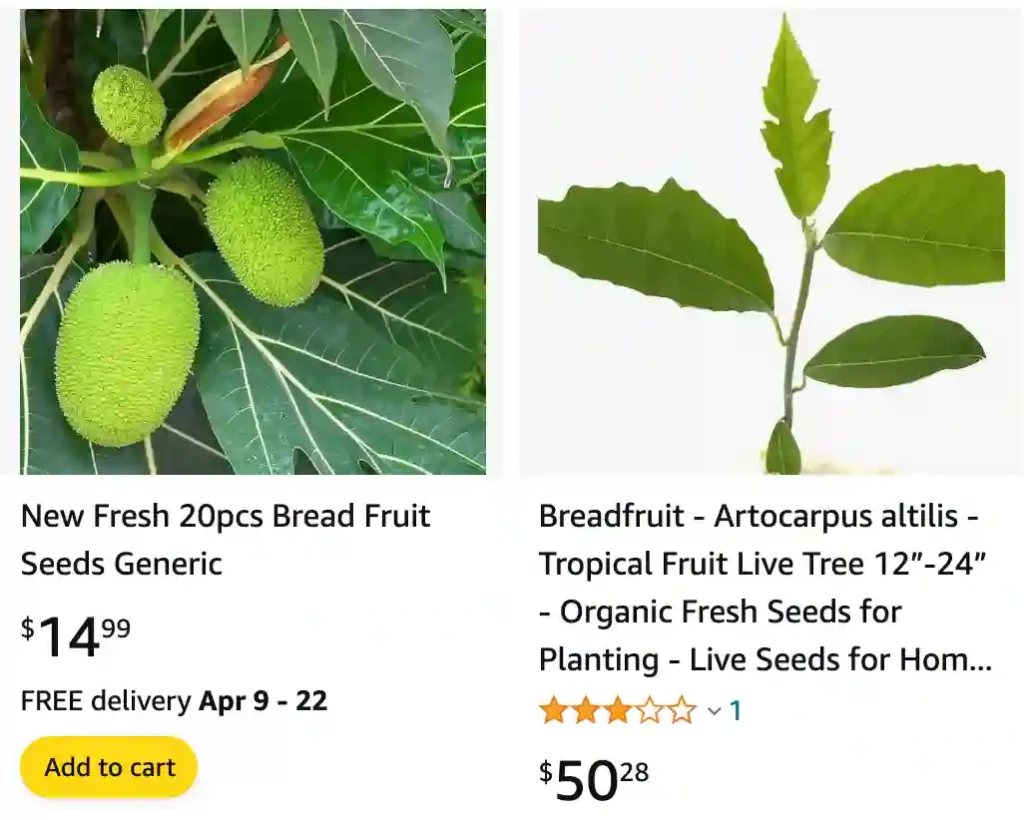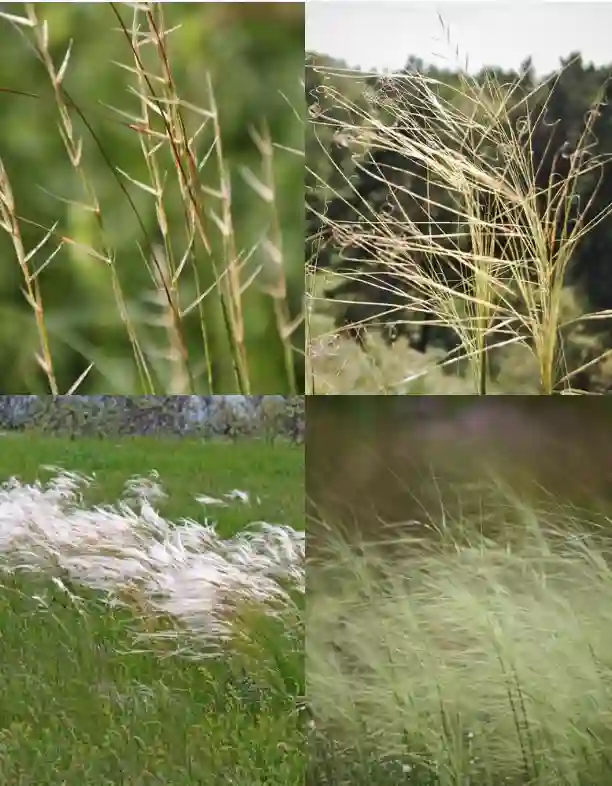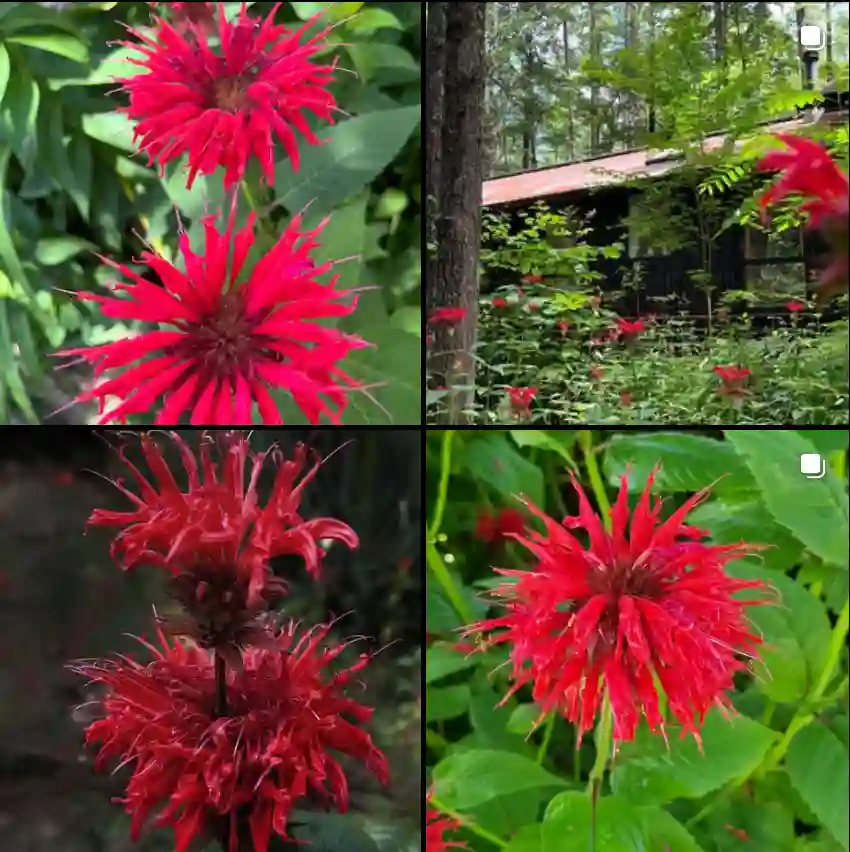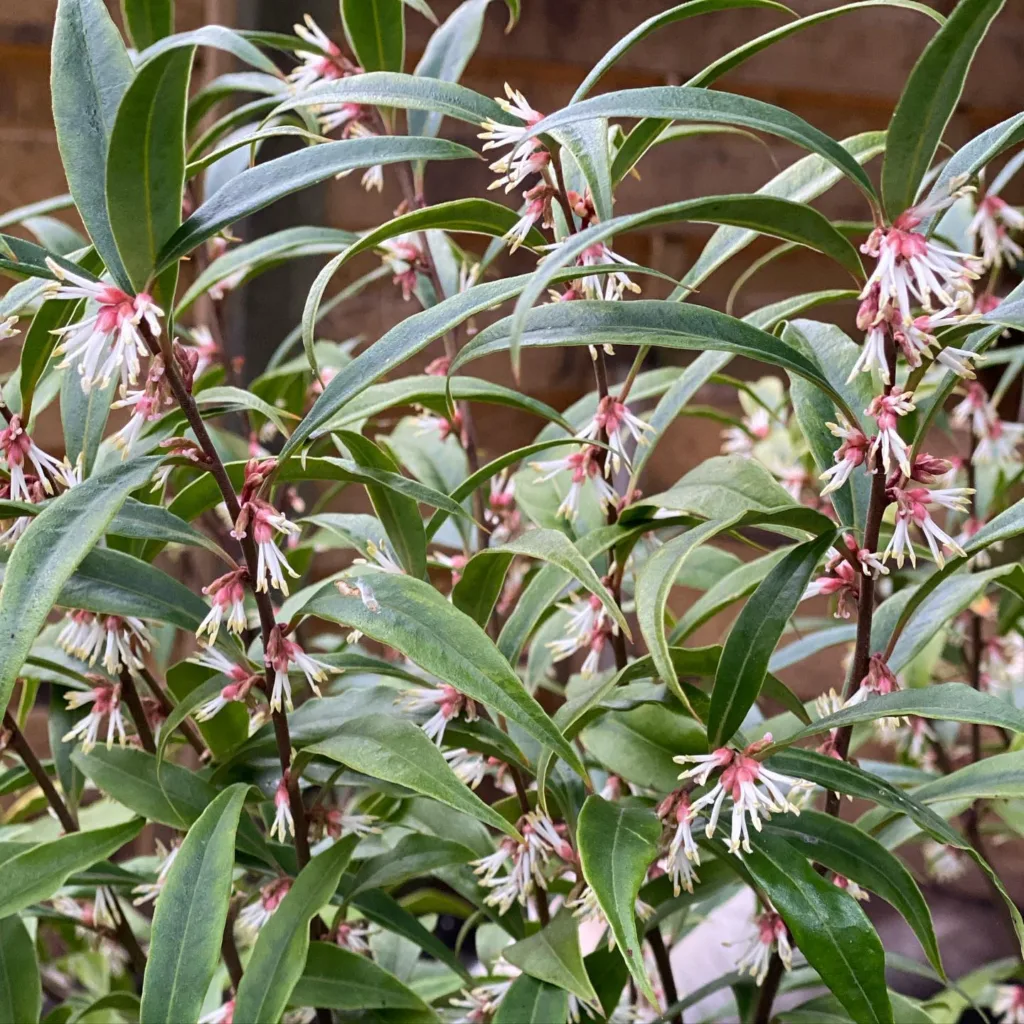
All About Artocarpus Altilis: The Breadfruit and My Experience Growing It
For years, I’ve been fascinated by the breadfruit (Artocarpus Altilis). This tropical wonder from Southeast Asia isn’t just a fascinating botanical specimen; it’s a delicious and versatile food source. Here, I’ll share my experience cultivating this magnificent tree and answer some of the most common questions about it.
What is Artocarpus Altilis?
Artocarpus Altilis – Breadfruit is a flowering tree belonging to the Moraceae family, which also includes jackfruit. Believed to be domesticated from its wild relative, Artocarpus Camansi, breadfruit boasts a rich history intertwined with Polynesian cultures. Its large, starchy fruits have been a staple food source in many tropical regions for centuries.
Breadfruit vs jackfruit
When comparing breadfruit and jackfruit, I noticed that breadfruit has a starchy, potato-like texture when cooked. In contrast, jackfruit is much sweeter and has a fibrous, meaty texture that’s great for vegan dishes.
Breadfruit vs durian
Breadfruit’s subtle flavor and soft texture contrast sharply with durian’s strong smell and creamy, custard-like consistency. Durian is much richer and more pungent, making it a unique experience compared to the mildness of breadfruit.
Breadfruit vs breadnut
Breadfruit and breadnut are similar, but breadfruit’s flesh is more substantial and versatile in savory dishes. Breadnut, on the other hand, is often enjoyed as a nutty snack.
Breadfruit vs potato
In terms of texture and versatility, breadfruit’s starchy, potato-like qualities make it a fantastic substitute for potatoes in many recipes. It can be baked, boiled, or fried just like potatoes, adding to its versatility.
Breadfruit vs soursop
Breadfruit has a mild, almost neutral flavor that sets it apart from the tangy, custard-like flesh of soursop. Soursop’s distinct tartness and creamy texture are quite different from breadfruit’s simplicity.
Breadfruit vs plantain
Breadfruit and plantain share a starchy quality, but I find breadfruit less sweet and more adaptable for savory dishes. Plantains have a subtle sweetness that makes them perfect for both sweet and savory recipes.
Breadfruit vs taro
Comparing breadfruit and taro, I appreciate breadfruit’s smooth, potato-like texture. Taro, however, has a denser, slightly grainy consistency that’s perfect for stews and soups.
How Do You Care for Breadfruit?
Breadfruit thrives in warm, humid climates with plenty of sunshine. Here’s a glimpse into my care routine:
- Sunlight: Aim for at least 6-8 hours of direct sunlight daily.
- Water: Consistent watering is crucial, especially during the establishment phase. I water deeply 2-3 times a week during dry periods and adjust based on rainfall.
- Soil: Well-draining, fertile soil is key. I use a mixture of potting mix, compost, and sand to ensure proper drainage.
- Fertilizer: Apply a balanced fertilizer during the growing season, following the product’s instructions.
- Temperature: Breadfruit struggles with frost. In cooler climates, consider container growing and bring it indoors during cold snaps.
My Tip: Mulching around the base of the tree helps retain moisture, regulate soil temperature, and suppress weeds.
How Do You Propagate Breadfruit?
There are two main ways to propagate breadfruit: seeds and grafting.
- Seeds: Breadfruit seeds are viable for a short time, so plant them fresh. I soak them overnight before sowing in a well-draining potting mix, keeping the soil moist and warm. Germination can take several weeks.
- Grafting: Grafting onto a mature rootstock derived from seedlings or root suckers can produce fruit faster. This technique requires some practice, so consider consulting a professional nursery if you’re new to grafting.
My Take: While seed propagation is a rewarding experience, grafting onto a mature rootstock can significantly shorten the wait for fruit production.
What to Plant With Breadfruit?
Breadfruit can be a companion plant for other tropical species with similar water and sunlight requirements. Here are a few ideas:
- Nitrogen-fixing plants: Legumes like beans and peas can help fix nitrogen in the soil, benefiting the breadfruit.
- Shade-loving plants: While breadfruit enjoys plenty of sun, its large canopy can create shade underneath. Consider shade-loving plants like coffee or certain ferns.
- Pollinators: Attracting pollinators like bees and butterflies can benefit fruit set. Plant flowering herbs or ornamentals near your breadfruit.
Remember: Always research the specific needs of companion plants before introducing them to your breadfruit tree.
Common Breadfruit Problems and Solutions
Breadfruit trees are generally resistant to pests and diseases, but a few issues can arise. Here’s what I’ve encountered:
- Mealybugs: These sap-sucking insects can weaken the tree. I use insecticidal soap or neem oil spray to control them.
- Fungal diseases: Fungal issues like root rot can occur in poorly drained soil. Ensure proper drainage and avoid overwatering.
Early intervention is key. If you notice any signs of pests or diseases, act promptly to prevent them from spreading.
Frequently Asked Questions About Breadfruit
Here are some additional questions I often get about breadfruit:
- How long does it take for a breadfruit tree to produce fruit? Seed-grown trees can take 7-10 years to fruit, while grafted trees may bear fruit within 3-5 years.
- Is breadfruit edible raw? No, breadfruit is best enjoyed cooked. It has a starchy texture similar to potato when cooked.
- How do you harvest breadfruit? Pick the fruit when it turns yellowish-green and gives slightly under gentle pressure.
- How do you store breadfruit? Ripe breadfruit can be stored at room temperature for a few days. Unripe fruit can be stored for several weeks in a cool, dry place.
Growing breadfruit has been a delightful journey. It’s a beautiful tree with the potential to provide delicious and nutritious food for years to come. With proper care and a little patience, you too can experience the joy of cultivating this tropical treasure.
If i die, water my plants!



